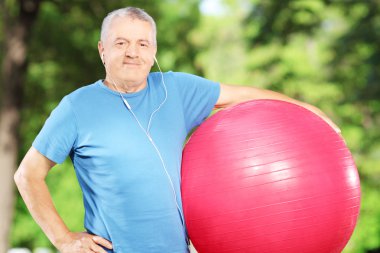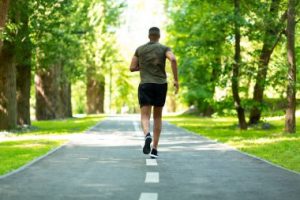
How Exercise Affect Blood Pressure (4 Helpful Exercises)
How exercise affect blood pressure, and can regular physical activity lead to long-term cardiovascular benefits? Imagine wielding a natural elixir that can sculpt your health, ward off chronic ailments, and fine-tune the very pressure coursing through your veins. Exercise, often hailed as the panacea for modern life’s maladies, does precisely that. But how exactly does breaking a sweat translate to healthier blood pressure? Let’s unravel the intricate dance between physical activity and the force exerted by your blood, illuminating the transformative power of movement on cardiovascular well-being.

How Exercise Affect Blood Pressure
Exercise plays a significant role in managing blood pressure, often leading to a reduction in both systolic and diastolic levels. Engaging in regular physical activity strengthens the heart, enabling it to pump more efficiently, which reduces the force on arteries and lowers blood pressure. This benefit is observed across various types of exercise, including aerobic activities, strength training, and even moderate-intensity workouts like brisk walking or cycling.
The Science Behind Exercise and Blood Pressure
Exercise improves cardiovascular health by making the heart stronger, which allows it to pump blood with less effort. As a result, the force on the arteries decreases, leading to lower blood pressure. Regular physical activity enhances the flexibility and health of blood vessels, helping them dilate more easily, which further supports healthy blood pressure levels. It also reduces stress, a common contributor to high blood pressure, by triggering the release of endorphins, which are natural stress-relievers.
Types of Exercise and Their Impact
Different types of exercise affect blood pressure in various ways. Aerobic exercises like jogging, swimming, and cycling are particularly effective in lowering blood pressure. Strength training, while beneficial for overall fitness, should be balanced with aerobic activities to avoid potential spikes in blood pressure. Even moderate activities such as gardening, walking, or taking the stairs contribute positively to blood pressure management. The key is consistency; regular exercise is more effective at managing blood pressure than sporadic activity.
Additional Benefits of Regular Exercise
Beyond blood pressure, regular exercise offers a host of other health benefits. It helps maintain a healthy weight, improves cholesterol levels, and reduces the risk of developing chronic diseases like diabetes and heart disease. Moreover, it enhances mental health by reducing anxiety and depression, which can indirectly contribute to lower blood pressure. As exercise becomes a habit, it creates a positive cycle where improved physical and mental health contribute to better blood pressure control.
The Physiology of Blood Pressure
The Cardiovascular System Overview
The cardiovascular system, comprising the heart, blood vessels, and blood, is responsible for transporting nutrients, oxygen, and waste products throughout the body. It plays a crucial role in maintaining homeostasis, regulating body temperature, and supporting immune function. The heart acts as a pump, pushing blood through a vast network of vessels, ensuring that all cells receive the necessary substances for survival and function.
The heart is a muscular organ divided into four chambers: two atria and two ventricles. The right side of the heart pumps deoxygenated blood to the lungs for oxygenation, while the left side pumps oxygenated blood to the rest of the body. Valves between the chambers and at the exit points of the heart ensure unidirectional blood flow. The heart’s rhythmic contractions are controlled by the sinoatrial node, the natural pacemaker, and the conduction system that coordinates the heartbeat.
Arteries are thick-walled vessels that carry oxygen-rich blood away from the heart to tissues. Their elasticity helps maintain blood pressure during the cardiac cycle. Veins, with thinner walls and valves, return deoxygenated blood to the heart, assisted by muscle contractions and gravity. Capillaries, the smallest blood vessels, facilitate the exchange of gases, nutrients, and waste products between blood and tissues, linking arteries and veins in the circulatory network. Together, these vessels maintain the circulation essential for life.
How Blood Pressure is Generated
Blood pressure is generated by the force of the heart pumping blood through the arteries and the resistance of the blood vessels to this flow. The heart’s pumping action, known as cardiac output, is the primary driver of blood pressure. Cardiac output is determined by the heart rate (the number of times the heart beats per minute) and the stroke volume (the amount of blood ejected with each beat).
As blood is pumped into the arteries, it encounters resistance from the walls of the blood vessels, known as peripheral resistance. This resistance is influenced by factors such as the diameter of the blood vessels and the elasticity of the arterial walls. Narrower or stiffer blood vessels increase peripheral resistance, leading to higher blood pressure.
The regulation of blood pressure involves a complex interaction between the nervous system and hormones. The autonomic nervous system, particularly the sympathetic branch, plays a critical role in controlling heart rate and the tone of blood vessels. When blood pressure drops, the sympathetic nervous system stimulates the heart to beat faster and stronger, while also causing blood vessels to constrict, thereby increasing blood pressure. Conversely, the parasympathetic nervous system helps lower blood pressure by slowing the heart rate.
Hormones such as adrenaline and noradrenaline, released by the adrenal glands, enhance the effects of the sympathetic nervous system, while other hormones like aldosterone and antidiuretic hormone regulate blood volume by controlling the balance of fluids and salts in the body. The renin-angiotensin-aldosterone system (RAAS) is another critical hormonal pathway that regulates blood pressure by adjusting blood vessel constriction and blood volume. Together, these mechanisms ensure that blood pressure remains within a range that is optimal for delivering oxygen and nutrients to tissues while maintaining overall cardiovascular health.
Factors Influencing Blood Pressure
Blood pressure is influenced by a complex interplay of factors, including genetics, diet, stress, and lifestyle choices. Genetically, individuals may inherit a predisposition to high or low blood pressure, which can be exacerbated or mitigated by other factors. Diet plays a crucial role, with high sodium intake, excessive alcohol consumption, and poor nutrition contributing to hypertension, while a balanced diet rich in fruits, vegetables, and low-fat dairy products can help maintain healthy levels.
Stress, both acute and chronic, can cause temporary spikes in blood pressure and, over time, may lead to sustained hypertension if not properly managed. Lifestyle factors, such as physical activity, smoking, and sleep quality, also have significant effects. Regular exercise can lower blood pressure by improving heart health, while smoking and poor sleep habits can increase the risk of hypertension. The impact of these factors can be short-term, such as immediate rises in blood pressure due to stress or diet, or long-term, where sustained unhealthy habits lead to chronic hypertension.
Immediate Effects of Exercise on Blood Pressure
Mechanisms Behind Acute Changes
Exercise induces various changes in blood pressure, influenced by several physiological mechanisms. During physical activity, the sympathetic nervous system (SNS) is activated, leading to an increase in heart rate and blood pressure to meet the body’s heightened demand for oxygen and nutrients. This increase is initially due to vasoconstriction, where blood vessels narrow under the influence of catecholamines like adrenaline, raising blood pressure.
However, as exercise continues, vasodilation occurs, particularly in the working muscles, facilitated by the release of nitric oxide (NO) from the endothelium. Nitric oxide is a potent vasodilator that relaxes the blood vessels, allowing more blood to flow to the active muscles while reducing overall vascular resistance. This complex interplay ensures that, despite the initial spike in blood pressure, there’s an eventual balance between vasoconstriction and vasodilation, allowing for efficient circulation.
After exercise, many individuals experience post-exercise hypotension, a temporary drop in blood pressure. This occurs as the SNS activity diminishes and vasodilation persists for a while, reducing vascular resistance and blood pressure below resting levels. This phenomenon is a natural response to exercise, often seen as beneficial in managing hypertension.
Long-Term Effects of Regular Exercise on Blood Pressure
Mechanisms Behind Chronic Changes
Exercise has a significant impact on blood pressure through several mechanisms that contribute to long-term changes. Regular physical activity improves the balance of the autonomic nervous system, particularly by enhancing parasympathetic activity and reducing sympathetic drive. This shift helps to lower resting heart rate and reduce blood pressure.
Additionally, exercise decreases peripheral resistance by promoting vasodilation, which is the widening of blood vessels. This occurs through the release of nitric oxide and other vasodilatory substances that relax the smooth muscle in the vessel walls. Furthermore, consistent exercise enhances metabolic health by improving insulin sensitivity, which reduces insulin resistance—a key factor in hypertension. As the body’s ability to utilize glucose more efficiently increases, the overall metabolic environment becomes more favorable, contributing to lower blood pressure. These combined effects create a more balanced cardiovascular system, leading to sustained reductions in blood pressure over time.
Types of Exercise and Their Impact on Blood Pressure
Aerobic Exercise
Exercise plays a significant role in managing and reducing blood pressure, particularly through aerobic activities. Aerobic exercises such as walking, running, cycling, and swimming have been consistently shown to lower blood pressure in both hypertensive and normotensive individuals. These activities work by enhancing cardiovascular efficiency, improving the elasticity of blood vessels, and promoting better blood flow.
As the heart pumps more effectively during aerobic exercise, it reduces the effort needed to circulate blood, leading to lower resting blood pressure. Regular engagement in aerobic exercise can result in sustained reductions in systolic and diastolic blood pressure, which, in turn, lowers the risk of hypertension-related complications such as heart disease and stroke.

Resistance Training
Resistance training, which includes activities like weight lifting and bodyweight exercises, is particularly effective in improving cardiovascular health. When done regularly, resistance training can lead to a modest reduction in both systolic and diastolic blood pressure. This type of exercise strengthens the heart and blood vessels, making it easier for the heart to pump blood, which in turn lowers blood pressure. However, during the exercise itself, there may be a temporary spike in systolic pressure, so it’s important for hypertensive individuals to approach resistance training with caution.

High-Intensity Interval Training (HIIT)
One of the most effective forms is High-Intensity Interval Training (HIIT), which involves short bursts of intense activity followed by periods of rest or lower intensity. HIIT has been shown to be highly effective in reducing blood pressure, as it enhances the heart’s ability to pump blood more efficiently, lowers resistance in the blood vessels, and improves overall cardiovascular health. This form of exercise can lead to rapid improvements in blood pressure regulation, even in short sessions, by increasing the elasticity of the arteries and reducing the stiffness that contributes to high blood pressure.
Flexibility and Balance Exercises
Flexibility and balance exercises, such as yoga and Pilates, can have a positive impact on blood pressure, primarily through their indirect effects on stress reduction. These forms of exercise emphasize controlled breathing, mindful movements, and relaxation, which can help lower cortisol levels—a stress hormone that, when elevated, can contribute to high blood pressure. By reducing stress and promoting relaxation, yoga and Pilates create a calming effect on the nervous system, leading to better regulation of blood pressure.

The Role of Exercise in Managing Hypertension
Prevalence and Risk Factors of Hypertension
Hypertension, commonly known as high blood pressure, is a prevalent condition affecting millions worldwide, with its incidence increasing with age. It is a significant risk factor for cardiovascular diseases, including heart attacks and strokes. The prevalence of hypertension is higher among certain demographics, such as older adults, individuals of African descent, and those with a family history of the condition.
Lifestyle factors, including poor diet, excessive salt intake, obesity, physical inactivity, and high alcohol consumption, significantly contribute to the development of hypertension. Managing hypertension effectively requires a multifaceted approach, and exercise plays a crucial role in this regard. Regular physical activity, such as aerobic exercises like walking, jogging, or swimming, has been shown to lower blood pressure by improving heart health and increasing the efficiency of the cardiovascular system. Exercise also helps with weight management, reduces stress levels, and improves overall vascular health, making it a vital component in both the prevention and management of hypertension.
Exercise as a Preventative Measure
Exercise plays a crucial role in managing hypertension, acting as both a preventative measure and a therapeutic intervention. Regular physical activity helps lower blood pressure by improving heart health, reducing arterial stiffness, and enhancing blood flow. Aerobic exercises such as walking, jogging, and swimming are particularly effective in lowering systolic and diastolic blood pressure. Resistance training also contributes by strengthening the cardiovascular system. The American Heart Association recommends at least 150 minutes of moderate-intensity aerobic exercise per week, complemented by muscle-strengthening activities twice a week, to prevent hypertension.
Exercise as Part of Hypertension Treatment
Exercise plays a crucial role in managing hypertension by helping to lower blood pressure and improve cardiovascular health. Regular physical activity, such as aerobic exercises like walking, cycling, or swimming, has been shown to reduce both systolic and diastolic blood pressure, making it a key component of hypertension treatment.
For individuals with high blood pressure, it is recommended to engage in at least 150 minutes of moderate-intensity exercise or 75 minutes of vigorous-intensity exercise per week. This level of activity not only helps in reducing blood pressure but can also lead to a decrease in the need for medication, as exercise enhances the efficiency of the heart and improves blood vessel function.
Additionally, exercise contributes to overall health by promoting weight loss, reducing stress, and improving insulin sensitivity, all of which are beneficial in controlling hypertension. Therefore, incorporating regular physical activity into daily routines is essential for hypertensive individuals to manage their condition effectively and reduce the risk of complications like heart disease and stroke.

Special Considerations
Special considerations are necessary for those with hypertension. Monitoring blood pressure during exercise is vital, particularly for individuals who are new to physical activity or have significantly elevated blood pressure. Using a home blood pressure monitor before and after workouts can help track changes and ensure safety. It’s also important to avoid overexertion, as pushing too hard can lead to adverse effects, such as dangerously high blood pressure spikes or heart strain.
Understanding individual limitations, which may vary based on age, fitness level, and the severity of hypertension, allows for a personalized exercise plan that maximizes benefits while minimizing risks. Consulting with a healthcare professional before starting or modifying an exercise routine is advisable to tailor the approach to one’s specific needs.
Barriers to Exercise and How to Overcome Them
Common Barriers to Regular Exercise
Many people face common barriers that prevent them from engaging in regular exercise, including a lack of time, motivation, or resources, as well as physical limitations or chronic conditions. Time constraints are often a significant hurdle, as busy schedules leave little room for fitness routines. To overcome this, it can be helpful to break workouts into shorter, manageable sessions throughout the day, or to incorporate physical activity into daily tasks, such as walking during lunch breaks or taking the stairs instead of the elevator.
Motivation can wane when progress is slow or when exercise feels like a chore. Setting realistic, achievable goals and finding activities that are enjoyable can help maintain motivation. Additionally, joining a class or working out with a friend can provide accountability and make the experience more social and enjoyable. For those with limited resources, such as gym access or equipment, home workouts or outdoor activities like walking, running, or bodyweight exercises can be effective alternatives.
Support Systems and Resources
In addition to professional guidance, community programs and online resources offer valuable support. Community programs, such as local fitness classes or group activities, can provide motivation and social engagement, making exercise more enjoyable and less daunting. Online resources, including virtual workout sessions, fitness apps, and informational websites, offer flexibility and accessibility, allowing individuals to integrate exercise into their routines despite busy schedules or other constraints. Together, these resources help individuals overcome barriers to exercise and maintain a consistent, healthy activity level.
Frequently Asked Questions about How Exercise Affect Blood Pressure
Q1: How does regular exercise influence blood pressure?
A1: Engaging in regular physical activity helps to lower blood pressure by strengthening the heart, enabling it to pump blood more efficiently. As a result, the force on the arteries decreases, leading to lower blood pressure levels.
Q2: What types of exercise are most effective in managing blood pressure?
A2:Aerobic exercises, such as walking, jogging, swimming, or cycling, are particularly effective in lowering blood pressure. Strength training and flexibility exercises can also contribute, but aerobic activities have the most significant impact.
Q3: Can exercise immediately lower blood pressure?
A3: Yes, exercise can cause an immediate drop in blood pressure, known as post-exercise hypotension. This effect can last for several hours after a workout, contributing to long-term blood pressure control.
Q4: How often should I exercise to see improvements in my blood pressure?
A4:Consistency is key. Engaging in moderate-intensity aerobic exercise for at least 150 minutes a week, or about 30 minutes most days, can lead to noticeable improvements in blood pressure.
Q5: Can exercise help reduce the need for blood pressure medication?
A5: Regular exercise can lower blood pressure enough that your doctor may reduce your medication dosage. However, this should only be done under medical supervision.
Q6: Is it safe to exercise if I have high blood pressure?
A6:In most cases, exercise is safe and beneficial for people with high blood pressure. However, it’s important to consult with your healthcare provider before starting any new exercise program, especially if you have severe hypertension or other health concerns.
Q7: What should I avoid during exercise if I have high blood pressure?
A7:People with high blood pressure should avoid activities that involve sudden, intense exertion, such as heavy weightlifting or sprinting, as these can cause a temporary spike in blood pressure. It’s also important to avoid holding your breath during exercises, as this can increase blood pressure.
Q8: How long does it take to see the effects of exercise on blood pressure?
A8:Many people start to see improvements in their blood pressure within a few weeks of regular exercise. However, for some, it might take a few months to notice significant changes.
Q9: Can exercise prevent high blood pressure?
A9:Yes, regular physical activity is one of the most effective ways to prevent the development of high blood pressure, especially in individuals at risk due to age, family history, or other factors.
Q10: Does the intensity of exercise matter in lowering blood pressure?
A10:Both moderate and vigorous-intensity exercises can lower blood pressure, but moderate-intensity activities are generally safer and more sustainable for most people. The key is to find a balance that fits your fitness level and health status.
Conclusion
Exercise plays a significant role in managing and reducing blood pressure, making it a powerful tool in the prevention and treatment of hypertension. Regular physical activity strengthens the heart, allowing it to pump blood more efficiently, which in turn reduces the force on the arteries and lowers blood pressure. Both aerobic exercises, such as walking or swimming, and resistance training contribute to these benefits. Additionally, exercise helps manage weight, reduces stress, and improves overall cardiovascular health, further contributing to healthier blood pressure levels. Therefore, incorporating regular physical activity into one’s routine is a crucial step toward maintaining optimal blood pressure and overall health.